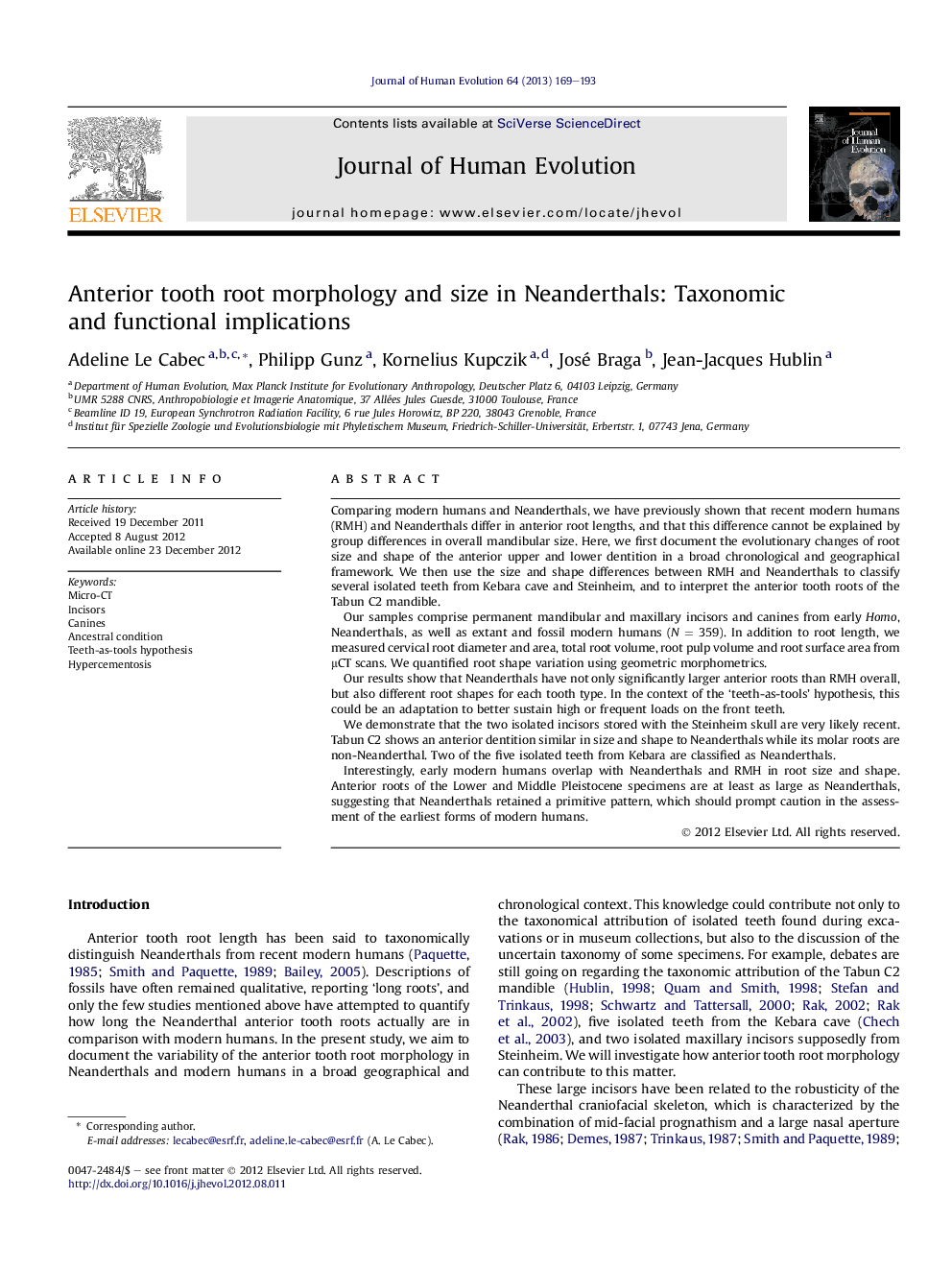| کد مقاله | کد نشریه | سال انتشار | مقاله انگلیسی | نسخه تمام متن |
|---|---|---|---|---|
| 4556243 | 1329465 | 2013 | 25 صفحه PDF | دانلود رایگان |

Comparing modern humans and Neanderthals, we have previously shown that recent modern humans (RMH) and Neanderthals differ in anterior root lengths, and that this difference cannot be explained by group differences in overall mandibular size. Here, we first document the evolutionary changes of root size and shape of the anterior upper and lower dentition in a broad chronological and geographical framework. We then use the size and shape differences between RMH and Neanderthals to classify several isolated teeth from Kebara cave and Steinheim, and to interpret the anterior tooth roots of the Tabun C2 mandible.Our samples comprise permanent mandibular and maxillary incisors and canines from early Homo, Neanderthals, as well as extant and fossil modern humans (N = 359). In addition to root length, we measured cervical root diameter and area, total root volume, root pulp volume and root surface area from μCT scans. We quantified root shape variation using geometric morphometrics.Our results show that Neanderthals have not only significantly larger anterior roots than RMH overall, but also different root shapes for each tooth type. In the context of the ‘teeth-as-tools’ hypothesis, this could be an adaptation to better sustain high or frequent loads on the front teeth.We demonstrate that the two isolated incisors stored with the Steinheim skull are very likely recent. Tabun C2 shows an anterior dentition similar in size and shape to Neanderthals while its molar roots are non-Neanderthal. Two of the five isolated teeth from Kebara are classified as Neanderthals.Interestingly, early modern humans overlap with Neanderthals and RMH in root size and shape. Anterior roots of the Lower and Middle Pleistocene specimens are at least as large as Neanderthals, suggesting that Neanderthals retained a primitive pattern, which should prompt caution in the assessment of the earliest forms of modern humans.
Journal: Journal of Human Evolution - Volume 64, Issue 3, March 2013, Pages 169–193